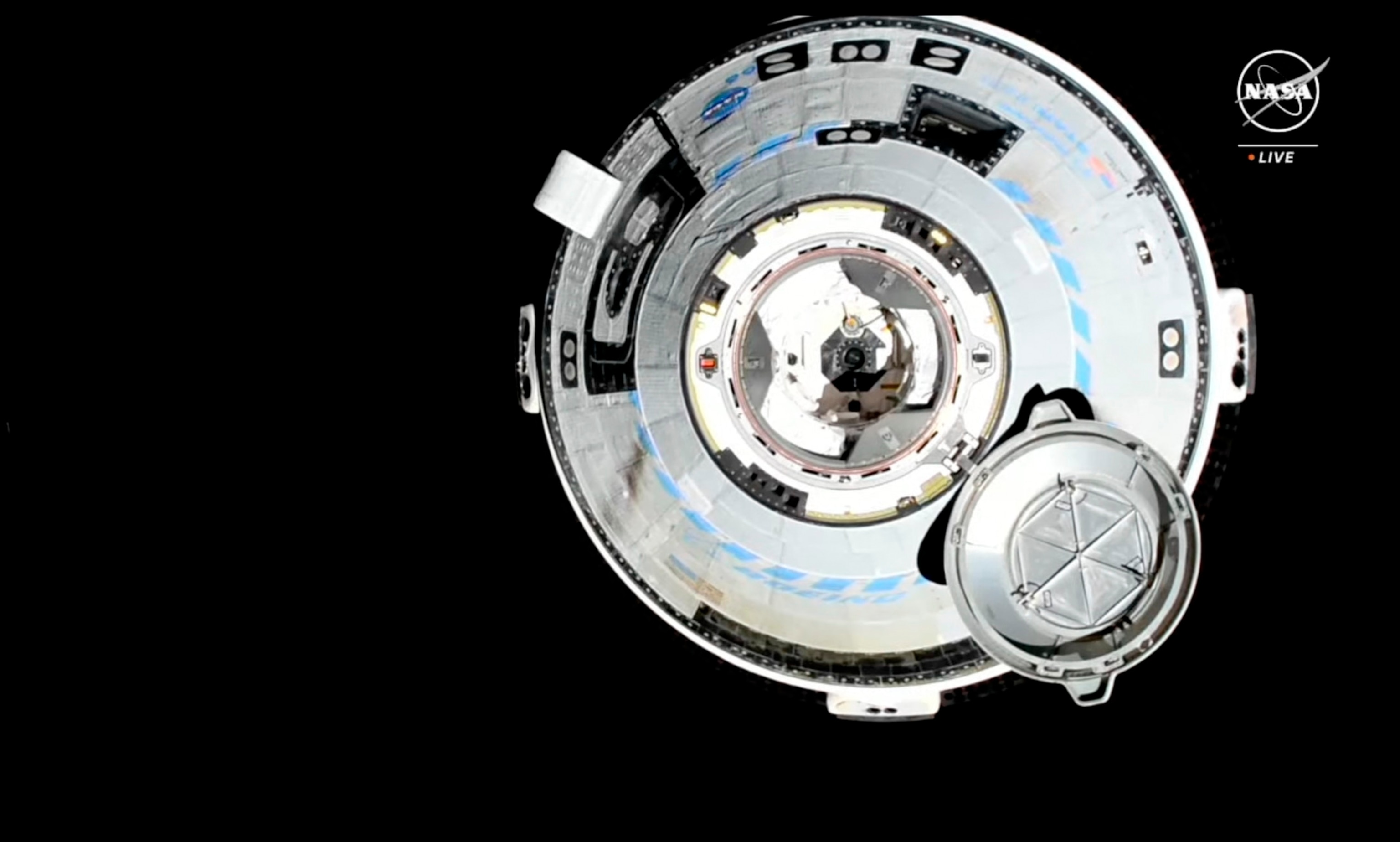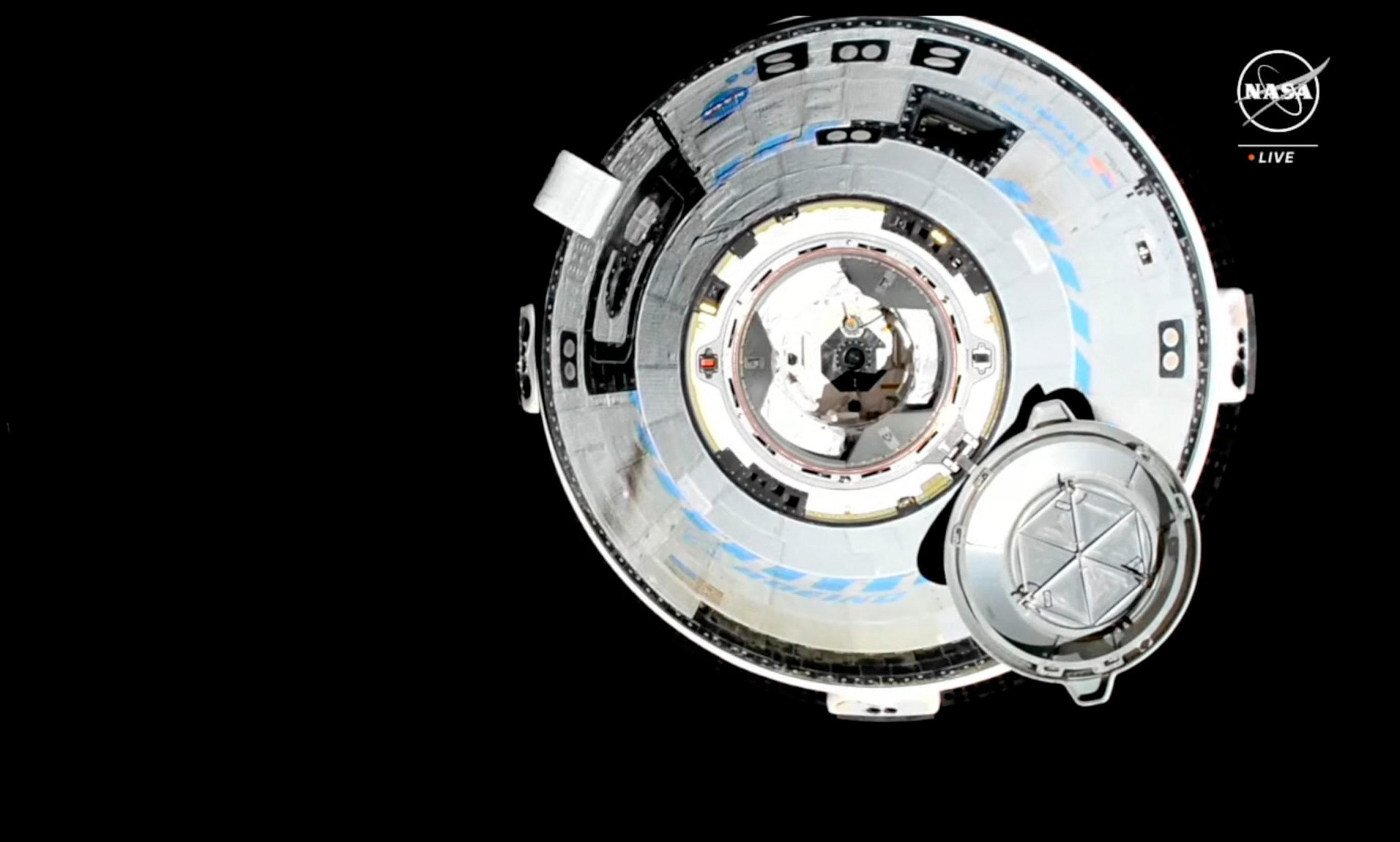Boeing’s Starliner spacecraft is experiencing five “small” helium leaks as its first astronaut-crewed flight test continues, the aerospace company and NASA said in an update on Monday.
While a major milestone was reached when Starliner successfully docked and delivered two NASA astronauts at the International Space Station (ISS) on June 6, the leaks mark the latest of several hurdles faced during this mission, including previous helium leaks and a thruster issue.
Helium is used to pressurize the spacecraft’s reaction control system (RCS) maneuvering thrusters, allowing them to fire, according to Boeing.
The leaks are similar to those discovered during Starliner’s May 25 launch attempt. That launch was scrubbed after a small helium leak was discovered in the service module, which contains support systems and instruments for operating the spacecraft.
Although it’s unclear how much helium is leaking, Boeing said that engineers have evaluated the helium supply and the leak rates, and have concluded that Starliner has enough helium for its return mission.

Boeing Starliner spacecraft prepares to dock with the International Space Station for the first time on June 6, 2024.
NASA via AP
The astronauts only need seven hours of “free-flight time” to perform the end-of-mission maneuvers and Starliner currently has enough helium for 70 hours of free-flight time, Boeing said.
“While Starliner is docked, all the manifolds are closed per normal mission operations preventing helium loss from the tanks,” read the update from the aerospace company.
Engineers are also examining a valve that is not properly closed on the RCS. All other valves cycled normally during a check on Sunday, according to the update.
Astronauts Barry “Butch” Wilmore and Sunita “Suni” Williams are continuing to test Starliner as part of the data collection required for potential NASA certification to send regularly crewed missions to the ISS. NASA has primarily been using SpaceX’s Dragon spacecraft to transport crew and cargo to the ISS.
Tests include making sure the spacecraft can power up again when it’s put in minimal power mode during missions aboard the ISS, as well as ensuring Starliner can support a crew with its own air, evaluating seats onboard, and checking the service module’s batteries, according to Boeing.
Wilmore and Williams were scheduled to return to Earth on Friday, June 14. However, the mission has been extended until June 18, pending weather and Starliner’s readiness.
“@NASA and @BoeingSpace teams set a return date of no earlier than Tuesday, June 18, for the agency’s Boeing Crew Flight Test,” ISS officials wrote Sunday in a post on the social platform X. “The additional time in orbit will allow the crew to perform a spacewalk on Thursday, June 13, while engineers complete #Starliner systems checkouts.”
The spacewalk will be performed by two different astronauts, but the extra days spent onboard will also allow preparations to be made for future spacewalks, NASA said on Monday.
Because Starliner’s launch and ISS docking have been completed, the final phase of the current mission will be Starliner undocking from the ISS and then adjusting its orbit to move away from the space station before re-entering Earth’s atmosphere and landing in the southwestern U.S.
ABC News’ Gina Sunseri contributed to this report.
NASA has reported that Boeing’s Starliner spacecraft has experienced five helium leaks, raising concerns about the safety and reliability of the vehicle. The leaks were discovered during routine inspections of the spacecraft, which is currently being prepared for a mission to the International Space Station (ISS) with astronauts on board.
The leaks were found in the propulsion system of the Starliner, which uses helium to pressurize the tanks that hold the spacecraft’s propellant. While helium leaks are not uncommon in spacecraft, they can pose a serious risk to the crew and mission if not properly addressed. NASA and Boeing are working together to investigate the cause of the leaks and develop a plan to repair them before the scheduled launch date.
In light of these issues, NASA has decided to extend the astronauts’ mission on the ISS to allow more time for repairs and testing of the Starliner spacecraft. The original mission was planned to last for two weeks, but it is now expected to be extended by at least a few days to ensure that the spacecraft is safe for the astronauts to return to Earth.
This is not the first setback for Boeing’s Starliner program, which has faced several delays and technical issues since its inception. In 2019, an unmanned test flight of the spacecraft failed to reach the ISS due to a software glitch, prompting NASA to order a second test flight before allowing astronauts on board.
Despite these challenges, NASA remains committed to working with Boeing to ensure the safety and success of future missions to the ISS. The agency has expressed confidence in Boeing’s ability to address the helium leaks and other technical issues before the next launch window opens.
In the meantime, the astronauts on board the ISS are continuing their research and experiments as they await further updates on their return to Earth. NASA and Boeing are working diligently to resolve the issues with the Starliner spacecraft and ensure a successful mission for all involved.



